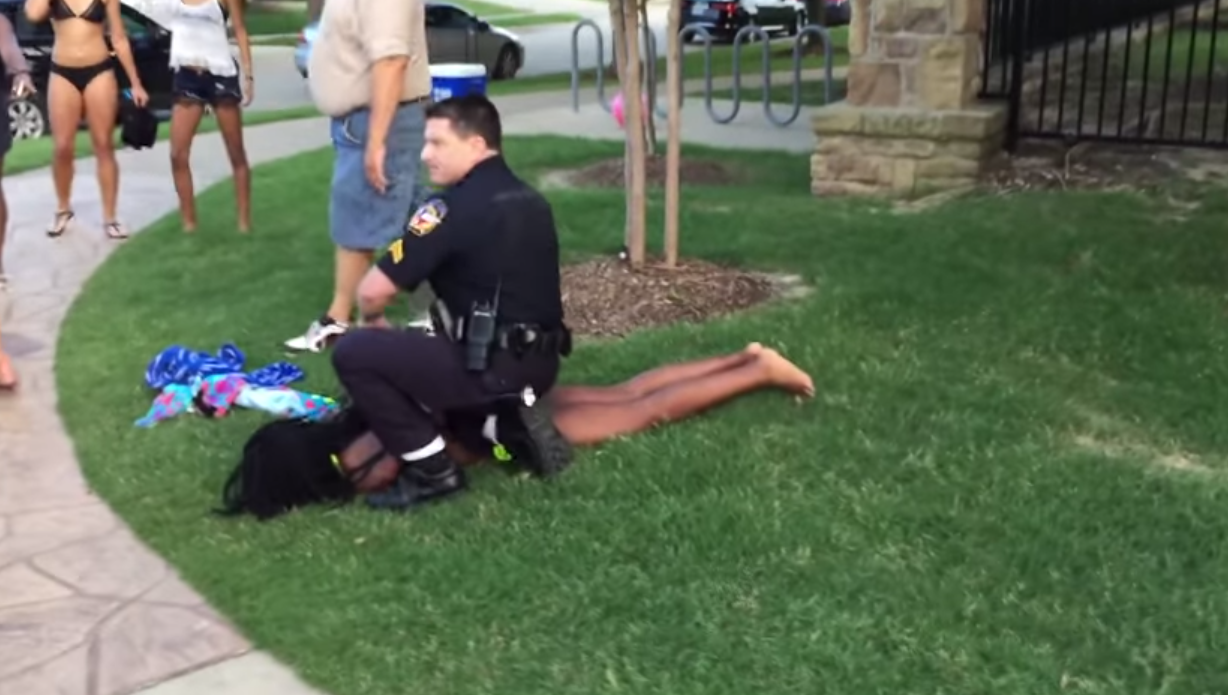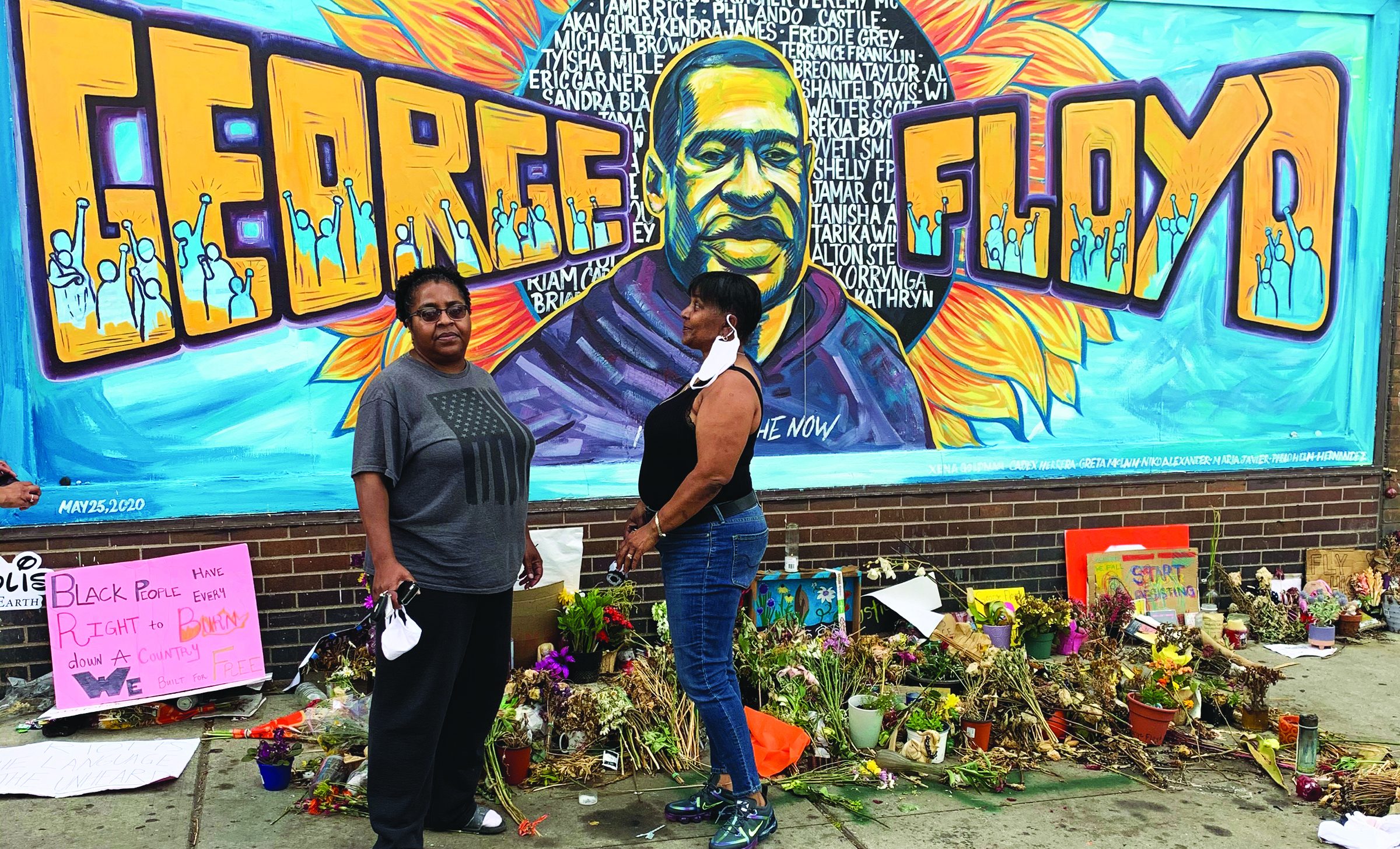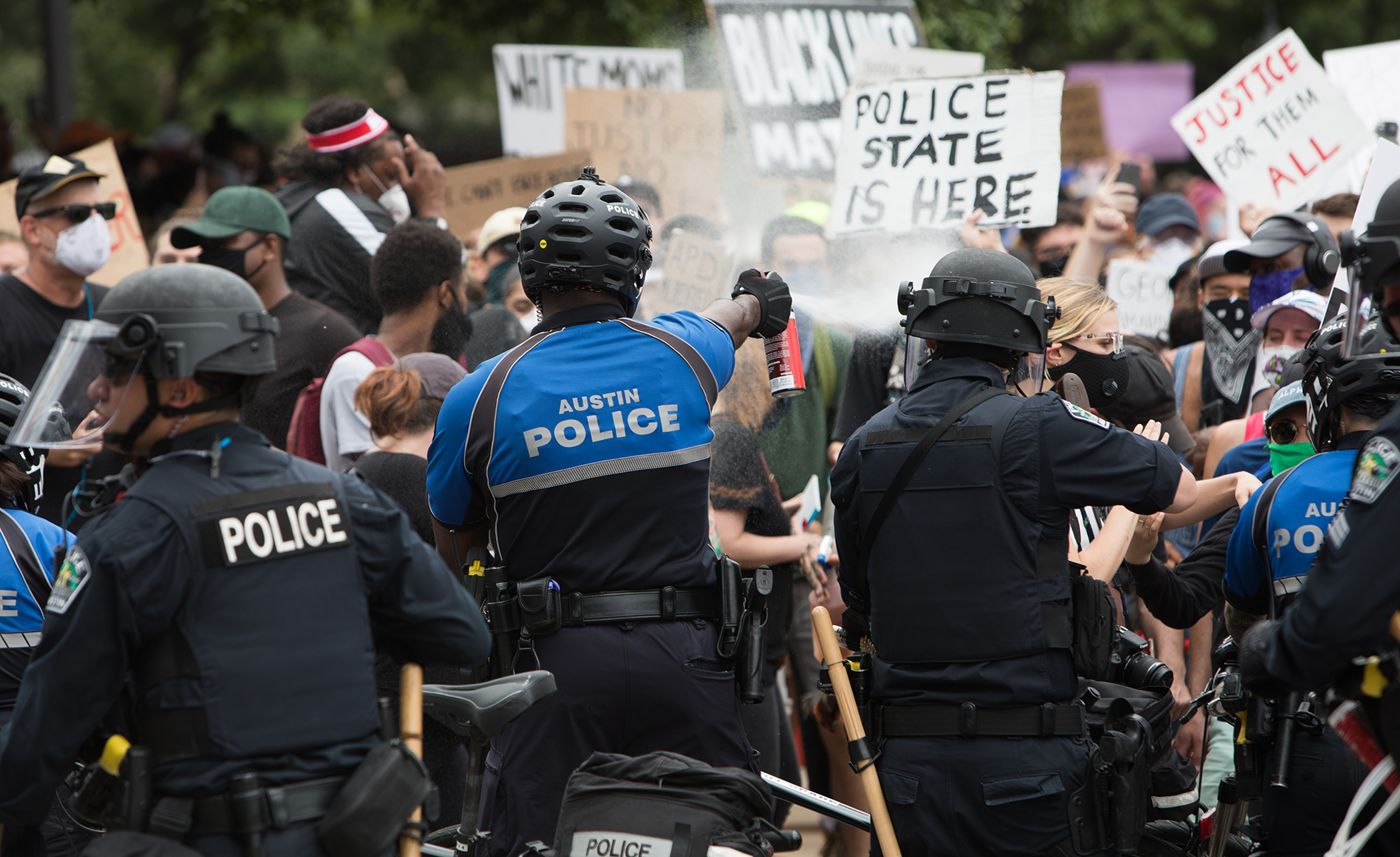
State of the Media: #NoFilter in McKinney

A version of this story ran in the July 2015 issue.
Above: Brandon Brooks captured the very moment when McKinney officer Eric Casebolt—who resigned with pay, pension and benefits following the incident— pinned 19-year-old Tatyana Rhodes to the ground.
There are many hallmarks of a bad bill, but the sirens really go off when legislation brings the far left and the far right together in opposition. That’s what happened earlier this year when Dallas Republican state Rep. Jason Villalba filed a bill that would have prevented citizens from filming police within a 25-foot “buffer zone.” Nobody liked that idea—not the right-wing privacy obsessives nor the left-wing police skeptics.
Had that law passed, we would have been far less likely to have documentation of incidents such as the one at a McKinney community pool in June, where a 15-year-old boy filmed a local cop throwing and pinning one of the boy’s classmates, a black teenage girl, to the ground after neighborhood adults—including a white man named Sean Toon—called the police on teens celebrating the end of the school year at a pool party. Toon—who caught a felony conviction as an 18-year-old for torturing animals and, two years later, was charged with assault with a deadly weapon—told reporters he called 911 because “out of control kids” were jumping the fence into the Craig Ranch pool.
Just a few years ago, we might have had to take Toon at his word. The teens who object to his story—including the party’s organizer, a young black woman who said a neighborhood white woman physically assaulted her and shouted racist slurs before cops arrived—might have struggled to have their voices heard.
But that was before smartphones and social media.
The 15-year-old, Brandon Brooks, kept his smartphone camera running as the McKinney cops arrived, producing more than seven minutes of video showing officers chasing and handcuffing non-white kids who’d been invited to the celebration. The officers breeze past Brooks, who is white and openly filming, their singular focus on wrangling the teens of color.
Brooks even captured the moment when McKinney officer Eric Casebolt—who resigned with pay, pension and benefits following the incident—pulled his gun and pointed it at confused, scared kids wearing swimsuits. It takes a willful misreading of the video to believe that the cops weren’t openly targeting students of color. Indeed, the cops allowed a white kid to film the entire incident, perhaps because they were too engrossed in the frothy business of handcuffing black teenagers to care.
Within a day, Brooks’ video made international news as media outlets picked up the YouTube link and delved into the story. But it was the refusal by McKinney’s young people to allow reporters to recast the incident in the McKinney Police Department’s preferred frame—that race played no role in the behavior of the cops or the white neighbors—that allowed us to see more sides of the story.
A young black photojournalist named Elroy Johnson interviewed 19-year-old Tatyana Rhodes, one of the party’s organizers, right after the incident, producing a video that has accompanied most news reports. Rhodes, joined in the video by her mom, who was supervising the kids at the pool, describes her older white neighbors’ harassment of her friends and fellow partygoers before cops arrived. She says that one white woman slapped her in the face after telling Rhodes she needed to “go back to [her] Section 8 home.”
Rhodes lives in the McKinney neighborhood where her party took place. Without affordable smartphone technology and a growing sense that police and mainstream media are not capturing all sides of the story when they cover racist violence and especially racist police violence, we might never have heard her story. Or perhaps we’d have heard it only after an overworked local beat reporter with a healthy skepticism for cop-issued narratives tracked her down.
We’ve seen this relentless dedication to documentation before, from grassroots journalists and anti-racism and anti-violence activists who have continued filming, at risk to their personal safety, in Ferguson, in Staten Island, in Baltimore, in South Carolina.
Eyewitness accounts of incidents like this no doubt make police departments nervous. But communities of color live in fear of precisely the kind of relentless surveillance that cops—with help from lawmakers such as Jason Villalba—are unhappy to see turned on themselves.
Without Rhodes’ story, and without Brooks’ video, we might be obliged to take the “official” version as truth. But thanks to the bravery of black students in McKinney who didn’t defer to their racist neighbors, and thanks to the ability of their friends and neighbors to share their own accounts of what happened, we don’t have to.
Corrected: The original version of this story stated that a bill filed by Dallas Republican state Rep. Jason Villalba would have prevented citizens from filming police within a 100-foot buffer zone. In fact, the bill’s 100-foot buffer zone would have applied only to observers carrying handguns. A 25-foot buffer zone would have applied to all other citizens. The Observer regrets the error.


